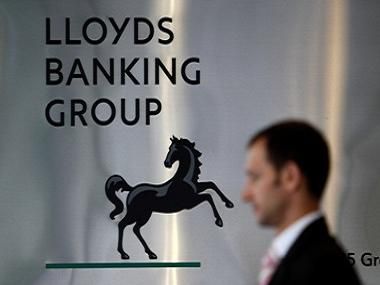A promise by the UK government to give retail investors an opportunity to buy shares in Lloyds Banking Group has jammed it firmly between a rock and a hard place.
A collapse in the share price has killed off the imminent prospect of a retail offering, while the success of an ongoing dribble-out mechanism means it might be prudent to forget about Joe Public altogether.
Chancellor George Osborne blamed turbulent markets for a decision to postpone a £2bn retail offering for its stake in the lender, acquired when the government bailed out the stricken bank in 2008, but affirmed it would go ahead once markets had calmed down.
The government has said a retail offer would be priced at a 5% discount to market value, with investors able to subscribe for between £250 and £10,000 of Lloyds shares, with a bonus share thrown in for every 100 held for one year. Priority will be given to those subscribing for less than £1,000 of stock. Those terms are not expected to change, despite the delay.
A discount is usually offered to attract retail investors, but the share price has fallen to such an extent that the government cannot sell at current levels without incurring a loss once a discount is added.
UK Financial Investments, the Treasury entity that manages the government’s bank shareholdings, has a breakeven price of 73.6p on its Lloyds shares. But the stock spent most of the fourth quarter of last year below the breakeven price and last week fell through 64p for the first time in 2.5 years. Shares are down nearly 12% this year.
Dribbling
The lower price has also jeopardised a previously successful dribble-out programme – the government sold 11.2bn shares at an average of 81p last year via the dribble-out, but the programme is currently inactive with the shares so far below water.
The state owns 6.6bn shares in Lloyds, or 9.2% of the share capital, worth around £4.25bn at current market prices. The government declares its holding every time it passes through a percentage point and the previous declaration, on October 28, happened when the state holding dropped below 10% – at the time the shares were trading at 74p.
Last month, UKFI said it intended to continue to sell the shares in the market and extended Morgan Stanley’s mandate to manage the dribble-out until June 30.
The strategy limits the number of shares sold to 15% of the volume traded in the market, and could, if allowed, clear out the government’s remaining stake in six to nine months if the share price recovers, based on average traded volumes of around 150m shares per day.
The government can pull the plug on the programme at any time.
If all remaining shares were sold at the current market price, the average selling price for the entire stake would be around 74.7p.
Need for speed
A note signed by Osborne and sent last week to people who had registered as potential Lloyds investors said the chancellor remained keen to “create a share-owning democracy in Britain”. But it is clear that the increased volatility in markets makes a retail offering far more difficult – and is an option that is unlikely to maximise value for taxpayers.
“I do think it would be an awful lot simpler and less costly to sell the remainder of the shares in the market than execute a retail sale at some fixed discount,” Richard Buxton, head of UK equities at Old Mutual Global Investors, told IFR.
If the government sticks to selling only above its breakeven (unlike RBS, where the government accepted a massive loss last summer) then Lloyds shares must rise at least 20% (to 77.5p) and sustain those levels before a retail offer can even be contemplated.
By comparison shares need to rise only 14% to the 73.6p breakeven price and hold that level for a few seconds in order for the dribble-out to resume. The postponement of the retail offer for several months also removes an overhang on the stock price, which should make the dribble-out resume even sooner. An official – or de facto – abandonment of the retail offer would do even more to remove the overhang.
The government could also consider using another of UKFI’s four different breakeven prices, which differ according to whether dividends and fees are included. The 73.6p price used at the moment is UKFI’s highest, while the breakeven price net of all fees and dividends is 62.7p.
Small investors starved of yield
Taking into account the required discount and the need to hold back stock for bonus awards, a retail offering is a costly and untidy option that exposes the chancellor to criticism if small investors lose money.
But a share offer in Lloyds is likely to be popular among savers searching for yield after years of record-low interest rates. Around 278,000 retail investors have already registered their interest with broker Hargreaves Lansdown, and the total number of potential investors is expected to exceed 1.5m. Bankers therefore consider £2bn to be the absolute minimum size for a retail offer.
